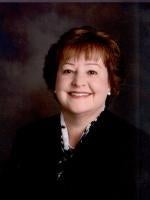In two recent actions, the National Labor Relations Board (“NLRB”) continued its activist role in supporting labor unions’ organizing efforts. In one case, the NLRB expanded “micro-units” to the retail industry. In another instance, the NLRB entered into a reciprocal arrangement with the U.S. Department of Labor (“DOL”) to assist in enforcing the Occupational Safety and Health Act (“OSHA”) and the Fair Labor Standards Act (“FLSA”).
In Macy’s, Inc. v. Local 1445, United Food and Commercial Workers Union, decided on July 22, 2014, the NLRB permitted the cosmetic and fragrance workers employed in a single Macy’s store in Massachusetts to organize. This marked the first time that the NLRB had approved a so-called “micro-unit” in the retail industry. The Board rejected Macy’s argument that permitting the UFCWU to organize cosmetic and fragrance workers in one store would “allow a proliferation of micro-units based solely on the products sold by employees,” resulting in “chaos and disruption of business.”
The Macy’s decision extended the principle, enunciated in Specialty Healthcare & Rehabilitation Center of Mobile, 357 NLRB No. 83 (2011), that it was “appropriate” under Section 9 of the National Labor Relations Act (“NLRA”), 29 U.S.C. § 159(b), for a labor union to organize and represent a small group of employees at a single worksite. That case involved certified nursing assistants in an extended care facility. The federal appellate court that includes Kentucky upheld the Board’s decision in the healthcare industry in Kindred Nursing Centers East, LLC. V. NLRB (6th Cir. 2013).
Before Specialty Healthcare, labor unions had traditionally attempted to organize the largest number of employees per unit. Now their strategy is to target smaller units to counter broader employer organizing avoidance efforts. Smaller units will be easier to organize, and union elections could be held quickly, giving employers little time to react. Furthermore, multiple labor organizations could seek to organize several different groups of employees in a single facility.
The Board has also become involved in enforcement actions beyond the NLRA. In a recent memorandum, the NLRB’s General Counsel advised regional directors that when investigating unfair labor practices (“ULP”) charges, investigators should encourage each charging party to file a claim if the person “divulges facts that suggest that an employer may have committed a possible [OSHA or FLSA] violation.” Before this action, the Board had already enlisted the assistance of DOL employees investigating OSHA whistleblower complaints to encourage claimants to file ULP charges to take advantage of the NLRA’s longer statute of limitations.
For the next two years at least, the NLRB will likely continue to develop new ways to expand its reach into the employer-employee relationship. Employers should perform frequent workplace audits to ensure that they are in the best position to minimize problems in labor-management relations.



 />i
/>i

